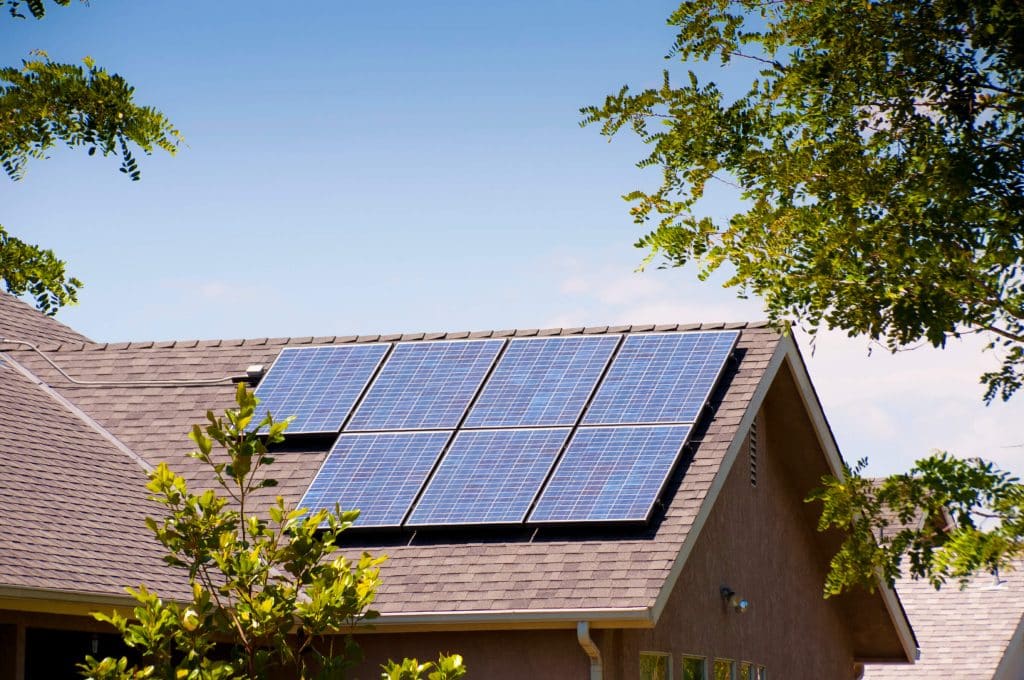Voltage drop (VD) is the loss of voltage in a circuit due to the resistance in the electrical circuit. To determine the amount of voltage lost in a circuit, we need to look at three parts: 1. Resistance of the conductor in Ohms (Ω), 2. The length of the circuit conductor, 3. The current flowing through the conductor. A forth component is to compare the VD to the operating voltage in the circuit to see the percent of voltage drop.
- The resistance of the conductor per 1000’ (Ω/kFT) can be found in Table 8 and 9 of Chapter 9 in the National Electrical Code (NEC). Table 8 is for DC and Table 9 is for AC. Divide by 1000’ to get the resistance of the conductor per foot (Ω/FT).
- The length of the conductor is the full circuit length; for DC and single-phase AC circuits, multiply the one-way distance by 2. For three-phase AC circuits, multiply the one-way distance by the square root of 3 (1.732).
- The amount of current flowing in the circuit directly affects the amount of voltage drop in the circuit; e.g. 2 amps of current will double the voltage drop of the circuit with 1 amp of current. Current is represented as intensity of current (I) in the formula.
- To determine the VD%, the operating voltage must be used. The operating voltage is dependent on the equipment and how it is connected. The PV source circuit voltage may be the product of modules connected in series or it may be controlled by DC-DC conversion devices and an inverter. The AC operating voltage is simply the nominal utility voltage at the premises.
DC and single-phase AC formula: VD = I x Conductor length x 2 x Ω/FT
VD% = VD ÷ Operating voltage
Example: A PV source circuit operating at 9a and 400v using a #12 conductor in a circuit with 50’ of length one-way. Table 8 shows a #12 (7 strand) to have 1.98 Ω/kFT; 1.98 (.00198Ω/FT)
9a x 50’ x 2 x .00198 = 1.782 volts dropped or lost in the circuit (VD)
1.782v ÷ 400v = .004455 or .44%VD
If you double the length of the conductor or double the operating current, the voltage drop would also double.
NOTE: This calculation is accurate using current and voltage data either from the PV module Standard Test Condition (STC) or the Normal Operating Condition (NOC). NOC test conditions represent the irradiance and cell temperature during the six critical sun-hours of the day. Both current and voltage are lower than STC. Since they are both lower, the VD% is close to the same as if you used STC current and voltage instead.
The AC side of the calculation is the same as The DC example above, however it may not be as accurate since the inverter rating can be sized from 80% of the PV rating to 135% of the PV rating. This affects the average operating current and the amount of voltage drop. We typically use the inverter’s listed max operating current if the PV array is sized 125% to 135% of the inverter rating. If the inverter is rated the same as the inverter, use 80% of the listed inverter max operating current.
Example: An inverter rated 6000 watts, 240v and 25a is connected to a 7200 watt PV array. The inverter AC output is located 30’ from the AC interconnection point. The conductor used is #10 copper rated 35a with resistance shown in Table 9 of 1.2 Ω/kFT (.0012Ω/FT)
25a x 30’ x 2 x .0012Ω/FT = 1.8 VD ÷ 240v = .0075 or .75%VD
The combined VD% of the DC and AC circuit is .44% + .75% = 1.19%
If the inverter and PV array are the same size, multiply 25a x 80% = 20a. This reduced the VD by the same proportion.
We usually consider more than 3% VD in the entire circuit (DC and AC) to be excessive. Increasing conductor size reduces the Ω/FT and reduces the voltage drop in the circuit. The voltage drop percent is a loss factor with energy production. The example above reduces the PV system production by 1.2%.
Three-phase AC formula: VD = I x Conductor length x 1.732 x Ω/FT
Kelly Provence
Certified Master PV Trainer
Solairgen School of Solar Technology

